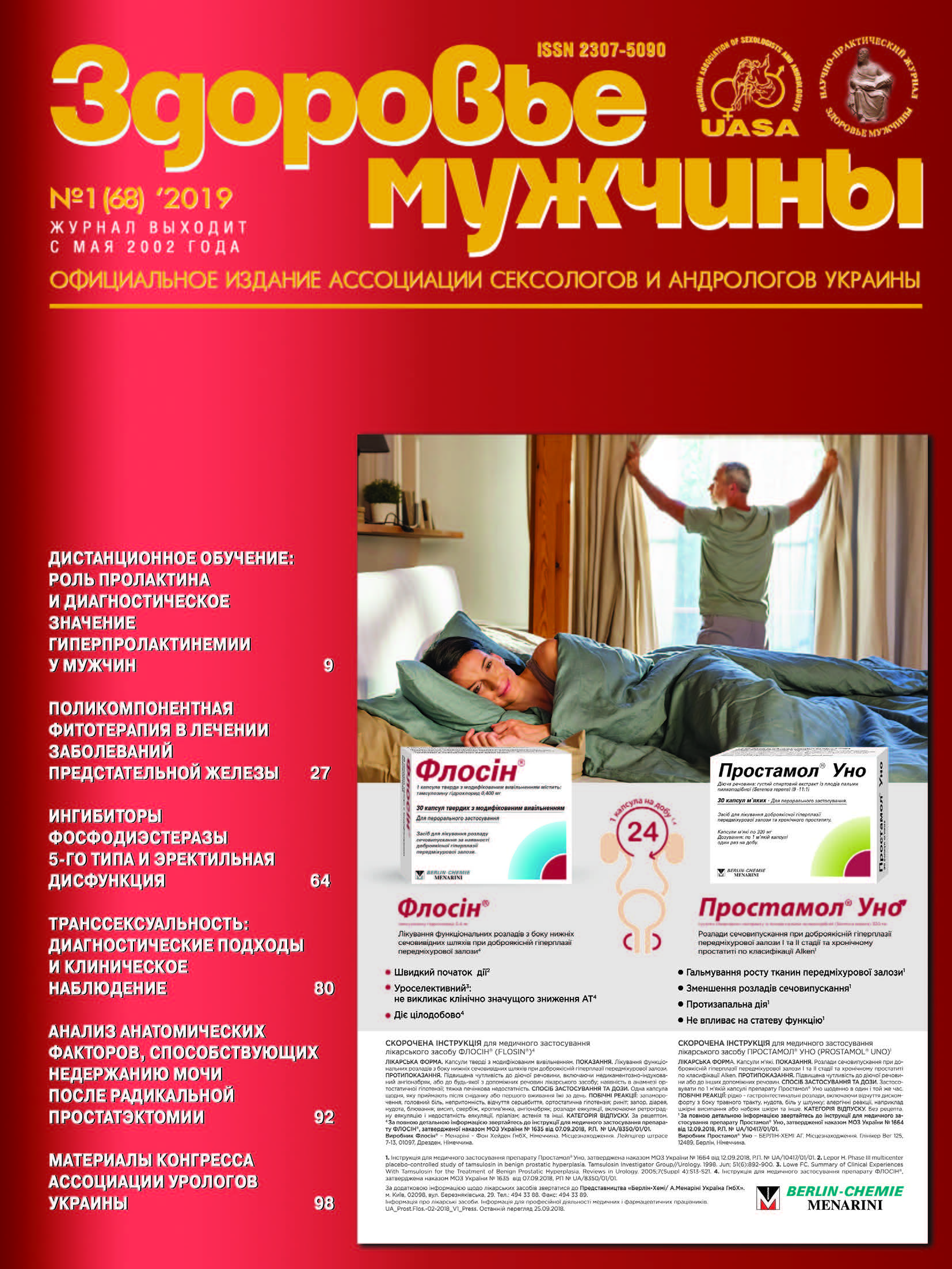Prevention of Complications in Patients with Urolithiasis on the Background of Type 2 Diabetes Mellitus After Extracorporeal Shock Wave Lithotripsy and Contact Ureterolithotripsy
##plugins.themes.bootstrap3.article.main##
Abstract
The objective: to evaluate the results of complex treatment of patients with urolithiasis in patients with concomitant type 2 diabetes mellitus after extracorporeal shock wave lithotripsy and ureterolithotripsy.
Materials and methods. We examined 60 patients with ureteral stones and concomitant type 2 diabetes mellitus after extracorporeal shock wave lithotripsy and ureterolithotripsy. Patients according to the prescribed postoperative therapy were divided into two groups of studies. The control group (n=28) was given classical therapy, and the main group (n=32) was additionally prescribed Solidagoren® phytopreparation at a dose of 30 drops 3 times a day for 3 months.
Results. The levels of uric acid in the blood and urine, the level of urinary oxalates, the functional state of the kidneys before and after treatment, the dynamics of the discharge of residual concrements were evaluated.
Conclusion. It is established that the components that make up Solidagoren reduce stone formation by reducing uricemia and increasing the excretion of oxalates. The use of the drug has a lithokinetic effect, as evidenced by a more rapid discharge of calculi and their fragments after endoscopic interventions and ESWL, helps to restore the functional state of the kidneys due to antioxidant properties, and vegetable origin determines its safe use.##plugins.themes.bootstrap3.article.details##

This work is licensed under a Creative Commons Attribution 4.0 International License.
Authors retain the copyright and grant the journal the first publication of original scientific articles under the Creative Commons Attribution 4.0 International License, which allows others to distribute work with acknowledgment of authorship and first publication in this journal.
References
National Kidney and Urologic Disease Information Clearinghouse. Adult Kidney Stones.
Сайдакова Н.О. Сечокам’яна хвороба: стан та проблемні питання надання спеціалізованої допомоги населенню в м Києві. Урологія. 2018;(1):33-40.
Дмитришин СП. Сечокам’яна хвороба: епідеміологічні особливості в регіональному аспекті. Урологія. 2015;19(4):21-9.
Weinberg AE. Diabetic Severity and Risk of Kidney Stone Disease. J. Eur Urol. 2014;65(1).
Єфімов А.С., Соколова Л.К. Цукровий діабет та серце. Мистецтво лікування. 2005;4:44-49.
Переверзев А.С. Особливості інфекцій сечових шляхів у пацієнтів з цукровим діабетом. Здоров’я України. 2006;8:24-27.
Eisner BH, Porten SP, Bechis SK, Stoller ML. Diabetic kidney stone formers excrete more oxalate and have lower urine pH than nondiabetic stone formers. J. Urol. 2010;183(6):2244-8.
Ordon M. Welk B., Ghiculete D, Lee JY, Pace KT. Is extracorporeal shockwave lithotripsy a risk factor for the development of diabetes mellitus? A population-based study. BJU Int. 2018
Бойко А.І. Досвід застосування комбінованої фітотерапії у хворих з уретеролітіазом. Нирки. 2013; 1(03).
Cameron MA. Urine composition in type 2 diabetes: predisposition to uric acid nephrolithiasis. J. Am.Soc.Nephrol. 2006;17(5):1422-8.
Wozniak P, Kontek B, Rozanski W, Olas B. The lipid peroxidation in patients with nephrolithiasis before and after extracorporeal shock wave lithotripsy. Future Med Chem. 2018;10(23):2685-2693.





